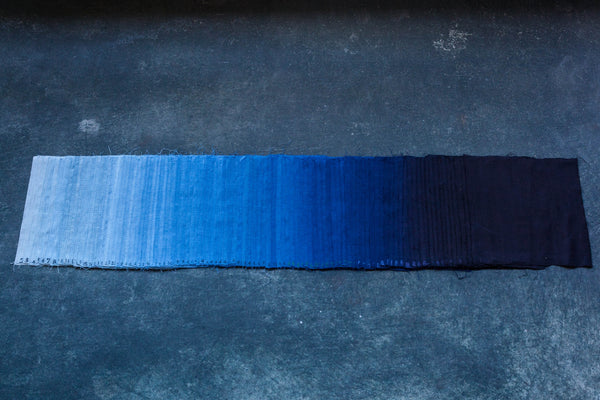setting indigo dye in fabric
Setting Indigo Dye in Fabric A Comprehensive Guide
Indigo dyeing is one of the oldest dyeing techniques known to humanity, characterized by its unique ability to produce stunning shades of blue. The use of indigo dye has a rich cultural heritage, especially in regions like Asia, Africa, and the Americas. This guide will explore the process of setting indigo dye in fabric, discussing necessary materials, techniques, and tips for achieving vibrant and enduring results.
Understanding Indigo Dye
Indigo refers to a specific group of dyes derived from the Indigofera plant, which has been used for thousands of years. Unlike many dyes that fix to fabric through chemical reactions, indigo dyeing is quite unique because the dye itself is not soluble in water until it undergoes a reduction process. This reduction transforms the indigo powder into a soluble form, which then interacts with the fabric.
Materials Needed
To begin your indigo dyeing project, you'll need the following materials
1. Indigo Dye Powder Sourced from a reliable dye supplier. 2. Reducing Agent This is typically sodium hydrosulfite or fructose, which helps solubilize the indigo. 3. Fixative A mordant, such as alum or salt, to help set the dye. 4. Fabric Natural fibers like cotton, silk, or wool work best, as they absorb the dye effectively. 5. Gloves and Apron Protect your skin and clothes, as indigo dye can stain. 6. Plastic or Stainless Steel Containers For mixing the dye bath. 7. Stirring Stick To blend the dye and reducing agent. 8. Water Clean, preferably distilled water for making the dye solution.
Preparing the Fabric
Before dyeing, it’s crucial to prepare the fabric properly. Wash it thoroughly to remove any sizing or finishes that may interfere with dye absorption. If desired, you can also soak the fabric in a mordant solution, which will help the dye adhere better to the fibers. Rinse the fabric and allow it to dry slightly, ensuring it's damp but not dripping wet.
Creating the Dye Bath
1. Mixing the Dye In a well-ventilated area, measure out the indigo powder and the reducing agent according to the instructions provided with your dye. Generally, you’ll use one part indigo powder with approximately two parts of the reducing agent. 2. Adding Water Pour warm water into your mixing container and slowly add the indigo powder and reducing agent to create a paste. Stir thoroughly to dissolve the dye completely.
3. Creating the Dye Vat After ensuring the dye is well mixed, add more water to fill the container, allowing the mixture to sit for about 30-60 minutes. This time allows the dye to oxidize, forming a reducing atmosphere which is essential for dyeing.
setting indigo dye in fabric

Dyeing the Fabric
Once your dye vat is ready, it's time to dye your fabric
1. Submerging the Fabric Carefully submerge the damp fabric into the dye vat. Ensure that it's fully submerged but do not overcrowd the container, as this could disrupt the dyeing process. 2. Soaking Time Allow the fabric to soak for 5-15 minutes, depending on the desired shade of blue. The longer you keep the fabric in the dye vat, the deeper the color.
3. Oxidizing the Dye Remove the fabric from the vat and gently squeeze any excess dye. As the fabric comes into contact with air, it will turn from greenish-yellow to various shades of blue. If you desire a deeper color, repeat the soaking and oxidizing process.
Setting the Dye
Once you achieve the desired shade, it's essential to set the dye to prevent fading
1. Rinse with Cold Water Rinse the dyed fabric under cold running water until the water runs clear, indicating that excess dye has been washed away.
2. Fixative Treatment Immerse the fabric in a fixative solution (such as a vinegar rinse) for about 30 minutes. This step helps lock in the color.
3. Drying Finally, hang the fabric to dry out of direct sunlight to preserve the vibrancy of the color.
Conclusion
Indigo dyeing is both an art and a science, offering endless possibilities for creating beautiful and unique fabrics. By following the outlined techniques and tips, you can achieve stunning results while enjoying the rich history and heritage of this age-old crafting technique. Whether you’re a beginner or an experienced dyer, the allure of indigo never fades, allowing you to dive into a world of creativity and expression. Happy dyeing!
-
The Timeless Art of Denim Indigo Dye
NewsJul.01,2025
-
The Rise of Sulfur Dyed Denim
NewsJul.01,2025
-
The Rich Revival of the Best Indigo Dye
NewsJul.01,2025
-
The Enduring Strength of Sulphur Black
NewsJul.01,2025
-
The Ancient Art of Chinese Indigo Dye
NewsJul.01,2025
-
Industry Power of Indigo
NewsJul.01,2025
-
Black Sulfur is Leading the Next Wave
NewsJul.01,2025

Sulphur Black
1.Name: sulphur black; Sulfur Black; Sulphur Black 1;
2.Structure formula:
3.Molecule formula: C6H4N2O5
4.CAS No.: 1326-82-5
5.HS code: 32041911
6.Product specification:Appearance:black phosphorus flakes; black liquid

Bromo Indigo; Vat Bromo-Indigo; C.I.Vat Blue 5
1.Name: Bromo indigo; Vat bromo-indigo; C.I.Vat blue 5;
2.Structure formula:
3.Molecule formula: C16H6Br4N2O2
4.CAS No.: 2475-31-2
5.HS code: 3204151000 6.Major usage and instruction: Be mainly used to dye cotton fabrics.

Indigo Blue Vat Blue
1.Name: indigo blue,vat blue 1,
2.Structure formula:
3.Molecule formula: C16H10N2O2
4.. CAS No.: 482-89-3
5.Molecule weight: 262.62
6.HS code: 3204151000
7.Major usage and instruction: Be mainly used to dye cotton fabrics.

